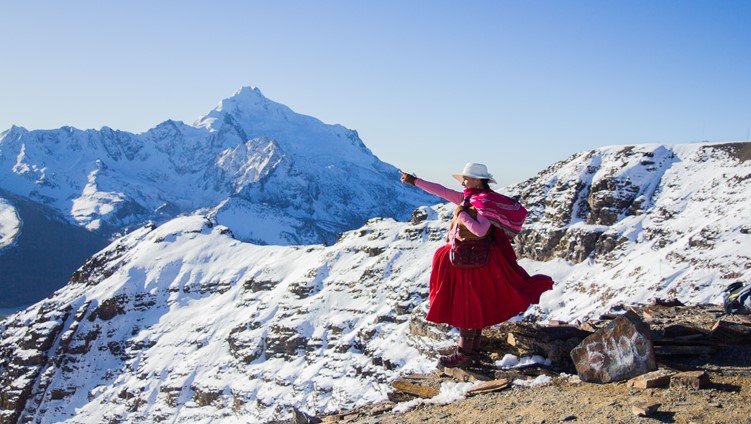The Climb winner Cat Runner on winning the show, what he would change about it, how it framed his experience as a trans climber, and the role of storytelling in climbing.
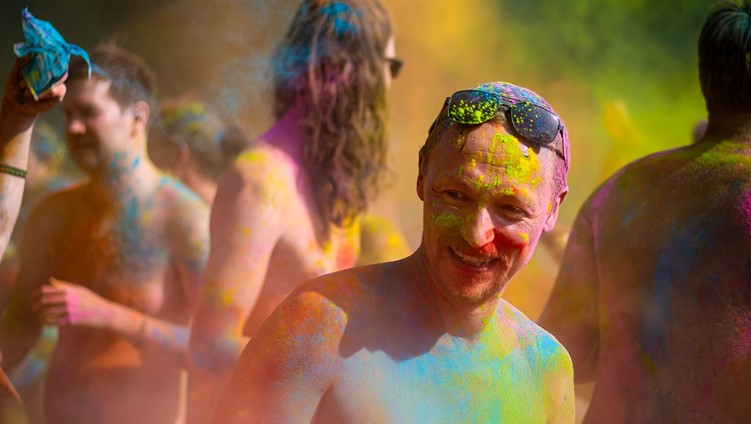
The Climb winner Cat Runner on winning the show, what he would change about it, how it framed his experience as a trans climber, and the role of storytelling in climbing.
When HBO’s The Climb aired back in January – fronted by Chris Sharma, and featuring professional climber Megan Martin as co-host and actor Jason Momoa as cameo hype-man – climbers around the world tuned in with interest.
Climbing films and vlogs are ubiquitous today on social media. IFSC World Cup coverage has been joined by Olympic coverage. And streaming platforms now feature a steady, well, stream of high-profile climbing documentaries like Free Solo, The Dawn Wall, and the Reel Rock series. But there hasn’t been anything quite like this.
Over eight knockout episodes, The Climb pits ten amateur climbers against one another across different climbing disciplines: deep water solo, bouldering, sport, trad and multi-pitch. In most episodes, the climbers have a single attempt at the route, with height climbed, and then speed, determining both the winner and the bottom two, who enter a knockout climb with the same rules.
At the end of it all, Kentucky climber Cat Runner came away with $100,000 and a year-long sponsorship with climbing brand prAna.
Photographer: Max Barron (@mjbarron)
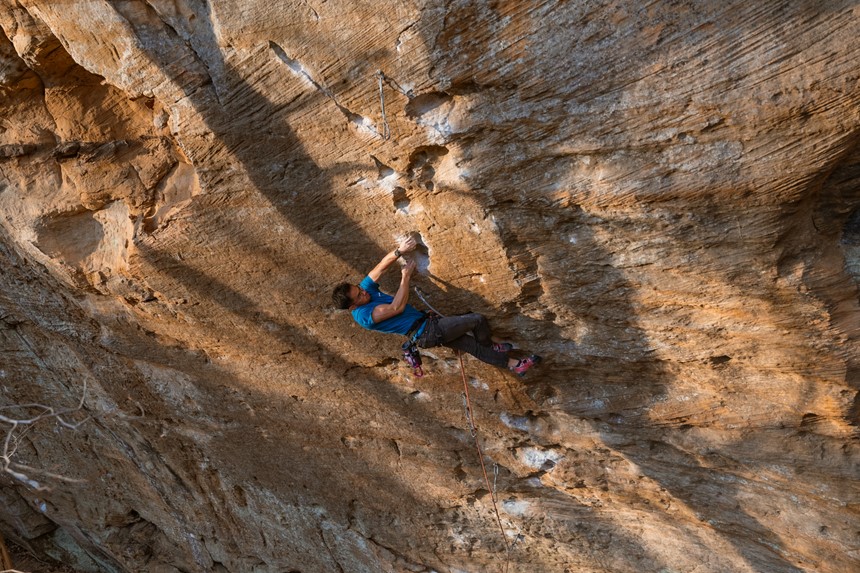
A climbing reality TV show was probably inevitable, given the sport’s rising popularity. But is it any good?
Thankfully, The Climb avoids unsavoury attempts to sow drama. The format doesn’t leave room for Machiavellianism, and the contestants just seem like lovely people, with diverse backgrounds and interesting personal stories to tell (without lapsing into tokenism – more on that later). It’s all very ‘crag friends’ over ‘ruthless contestants’ – a camaraderie, Cat says, that was entirely genuine. The contestants are still in touch regularly.
This is just as well for Cat, as somebody who prefers climbing partners “that you can feel vulnerable around, that you feel safe around, so you can actually give yourself fully to climbing … because you feel so supported everywhere else.” Many climbers can surely relate. “I’m not a person where I can climb with just strangers,” he continues. “My climbing is really influenced by who I climb with, and I have very specific people that I feel comfortable around.”
This camaraderie helps make the show relatable, foregrounding a recognisable feeling of mutually supportive stoke as well as a focus on performance and competition. The climbing difficulty also helps. While lots of the contestants clearly project harder grades, most of the climbing occurs in the 5.11 to 5.12 range, allowing many viewers to see themselves – or at least their reasonable aspirations – in the participants. It frames climbing, and even climbing sponsorship, as about more than raw grades.
Image courtesy of HBO
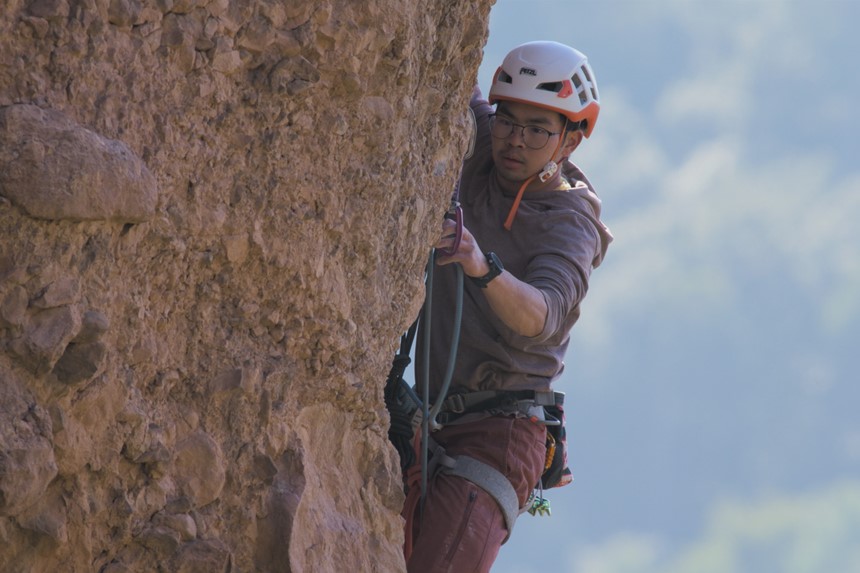
This is all well and good, but climbing in front of a huge camera crew as part of a one-chance format can’t be easy?
“I tried to focus on everything that I had under my control,” says Cat. “For me, that was trying to put aside this imposter syndrome that I felt, and I know a lot of other people felt too. Why am I here with these people? How do I stack up to them, and their climbing careers?”
For the most part, he felt fairly well equipped to execute the climbing, even under pressure. “Climbing is something that I know how to do. Climbing is something that I can perform pretty well at, and I just needed to go and try it and do my best.” A testament to the mindfulness climbing encourages and requires, or to Cat’s ability to block everything else out?
“The only time I felt stick-to-my-stomach nervous was the main climb of the last week,” he recalls. The finalists didn’t know which routes they would be climbing until the day of the climbs, leaving them to speculate about which of Mallorca’s notorious deep-solo routes it might be. The palpable nerves, and the plentiful drama, make for the most nail-biting episode in the series.
'The only time I felt stick-to-my-stomach nervous was the main climb of the last week.'
The bigger issue with the one-attempt format, from Cat’s perspective, is that it means major outcomes hinge on fleeting moments, rather than overall performance. “I think it would be really cool to have a format where everyone stays on for the entire time and you accumulate points, to really figure out who is the best performer out of this group with all these disciplines. I mean Brad was just incredible.”
Then 21-year-old Brad Burns is the show's youngest contestant, and emerges as the frontrunner over the first three episodes of deep water soloing, bouldering (supposedly two of his weaker disciplines) and technical sport climbing. In week four, in which the climbers project a huge overhanging 13a sport route, Brad – who had been overworked balancing his studies, and who was reportedly suffering from food poisoning at the time – unexpectedly fell early, and was ultimately eliminated.
“It was extremely shocking, extremely sad,” says Cat. “He's an alpine climber, a mountaineering person. So we didn't get to see him go and destroy trad or multi-pitch.”
(Left) Fist-bumping the photographer (Keely Wells, @k.e.wells) while mid-climb on Where’s the Beef? in Red River Gorge, KY; (Right) Biggie Shorty boulder in Stone Fort, Chattanooga, TN (also Keely Wells).
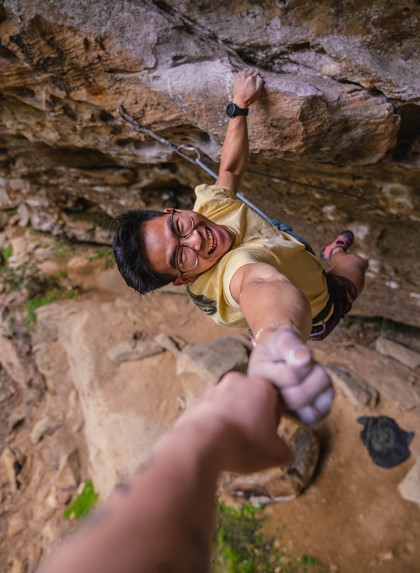
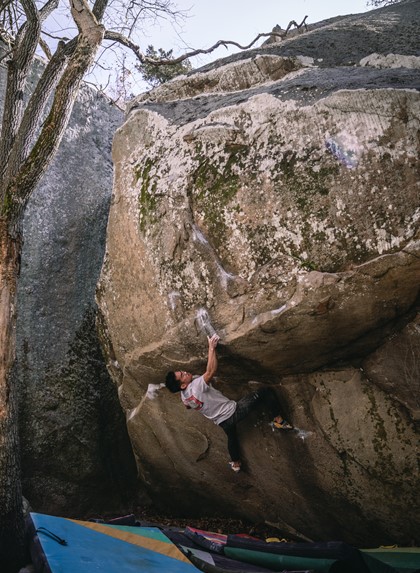
After climbing highest in week four, Cat arguably became the favourite – all the more impressive, considering he stands at just five feet tall. Though some routes suit shorter climbers, the opposite is usually the case. But it’s not all negative.
“I do strongly believe that short climbers tend to have a little bit more fun,” Cat says, because you are forced to start getting into technique and expanding your wheelhouse.” When conventional route beta doesn’t work for you, “it's really, really beneficial to know how to read beta well and how to break beta well. That's honestly what I have some of the most joy in: going and breaking beta, finding the short-person beta. Some of my proudest sends are not necessarily my limit climbing, but climbs that have been very hard as a short climber and I've figured out a way to do them.”
Which begs the question: what are the most useful techniques, as a short climber? He has a ready-made list of five: smears, toe hooks, lock-offs, dynos and high steps.
'I do strongly believe that short climbers tend to have a little bit more fun,” Cat says, because you are forced to start getting into technique and expanding your wheelhouse.'
For Cat, the show’s personal storylines hold its potential to effect positive change – particularly the fact that the final episode comprises Robyn, a white woman; Dom, a Black man; and Cat, a trans man who is also “Asian and short and all the other things that I am.”
Cat remembers saying something during filming that he thought might raise a few heckles. “I’m not going to lie,” he responded when the producers asked him who he thought would win, “I do hope that the person who wins is going to be someone other than a white cisgender male.”
“I said that and I was like, ‘This is gonna push some buttons with some people!’” Cat continues. “But I think it's true: the representation in mainstream climbing media, and just climbing in general, is historically white, is historically male, is historically heterosexual.”
This isn’t to say he wouldn’t have celebrated a white cisgender male winner. “It's nothing against Brad or Deco,” Cat says. “They're amazing people, they're amazing climbers, and we would support them 100% if they had won, and be stoked for them – so fucking stoked for them.”
Another winner, though, would add extra layers of significance. “When you grow up as part of a marginalised identity – an identity that you don't see reflected back at you – you're very aware of that intentional erasure, that omission, just that silence, that void,” Cat reflects. “And especially now as an adult, I'm even more aware of how that influenced how I look at myself, how I look at other people, the future that I can envision for myself. So Dom and I particularly just knew: ‘This is going to mean something, and it's going to be really good.’”
'When you grow up as part of a marginalised identity – an identity that you don't see reflected back at you – you're very aware of that intentional erasure, that omission, just that silence, that void.'
But this isn’t a straightforward story of visibility. More important to Cat is the way the show tells his story.
“Knowing the outcome, I knew my story was probably going to be scripted pretty well, just because they have to make me likeable! The only show where I think sometimes the person who does win isn't a likeable person is Survivor, and that's just because of the nature of the game … it's a game of deception.”
The fact that Cat is a trans man only appears midway through the show, and the emphasis is never on him being the trans representative, or his transness being the main part of his identity. “I think it was handled really, really well,” Cat says. “I come in as a trans climber, but I'm not the trans climber.” The focus is: “I'm here because I'm a climber, and I also happen to be trans.”
Being trans “has certainly influenced who I am, how I interact with the world, how I navigate the world – and in some aspects more than other identities,” he says. “But it's not this thing that impacts my performance level of climbing, unless I'm in a transphobic space, then I'm not going to be able to perform as well, because I'm over here trying to figure out if I’m safe.”
When telling stories about trans people, or about other marginalised identities, including people for the sake of meeting a diversity quota shouldn't be the end goal, Cat argues. Instead of more diverse stories about white people, we need to diversity who we centre. He paraphrases director Taika Waititi to make the point. “This push for diversity is almost creating a negative impact and a false representation, with this pressure to have someone of every single identity in every friend group. That's not realistic, it's not authentic … it's creating this tokenisation that is being accepted as diversity. What we need instead is a full story about, say, Polynesian people. That's the cast; that's the story!”
He also references trans swimmer Schuyler Bailar as a powerful voice on this issue. Bailar makes the point that, when he gives talks to people from very different backgrounds, he relates to people not by being visible, but by telling his story, his stories, authentically.
'This push for diversity is almost creating a negative impact and a false representation, with this pressure to have someone of every single identity in every friend group. That's not realistic, it's not authentic … it's creating this tokenisation that is being accepted as diversity. What we need instead is a full story about, say, Polynesian people. That's the cast; that's the story!'
This makes it hard to say whether climbing is becoming a more welcoming space for trans people, Cat responds when I ask. Because visibility can’t be the metric. “Without protection, visibility is a trap,” he says. “Because you know, you're pushing for people to come out, you're pushing for people to be visible, but unless they're going to be protected, being visible and being out is not safe.”
Climbing is just a microcosm of society, “so the problems that exist in society also exist within the climbing community.” Any meaningful measure of how welcoming and safe climbing is must therefore be local.
“There's this really common argument that, ‘Oh, nature doesn't care that you're gay, you're trans – the mountains don't discriminate,’” Cat says. “But the people recreating those places do. So for me personally, I climb with people I'm comfortable around, that I know I'm safe around.”
Safety is a much more subtle process than people may realise. As well as focusing on climbing, Cat finds himself needing to stay alert, to “read the room” more than most. “You prepare for the worst; you have to have escape plans,” he says.
'Without protection, visibility is a trap.'
Image courtesy of HBO
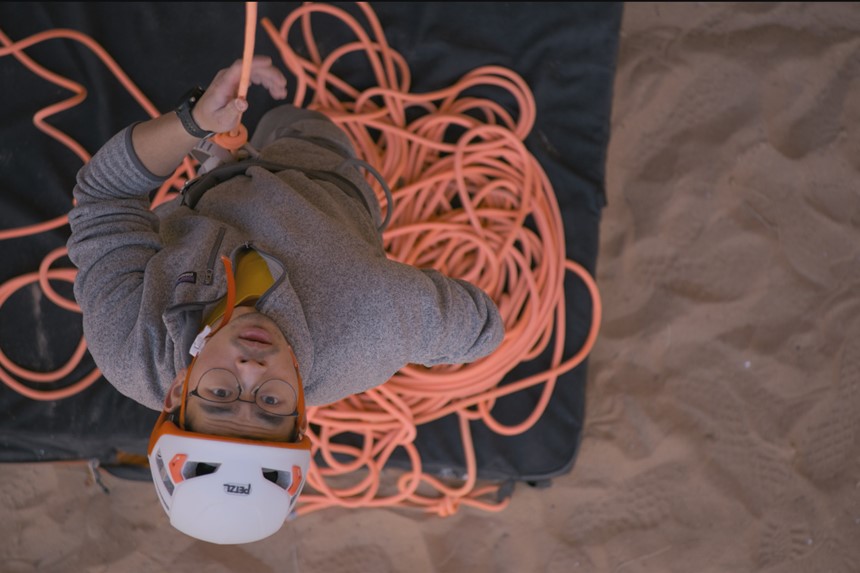
Especially given coverage of trans people “hyperfocuses on medical transition, on our bodies, and it effectively dehumanises and others us,” the ongoing work of telling, sharing, and listening to authentic, non-tokenistic stories is vital.
When I ask about good examples, Cat firstly recommends diverse circles of information as the surest way to find stories regularly and organically. But he does mention Disclosure, a documentary on Netflix. “It's about the history of trans representation in the media. Not just trans representation, but gender representation, and how those tropes and that representation has influenced our perception of trans people, what we expect trans people to be. In 2020, when the film came out, there had been a study done, and 80% of Americans said that they don't know a trans person – this is someone who’s out to them.” This is problematic, because “if they don't know someone, everything that they're getting – who trans people are, how to interact with trans people – is coming from the media. And if that is overwhelmingly negative, or creating one specific story, then that’s problematic.”
Right now, the most pressing transition in Cat’s life is that from The Climb winner and sponsored climber into an uncertain future. How to maintain that level of success? How to balance climbing with his photography work, his efforts to establish the Queer Climbers Network, and wider life? It’s an “existential” question that he’s constantly grappling with, he says.
While he has some loose climbing ideas – a friend has proposed working El Sendero Luminoso, a 5.12c fifteen-pitch route in Mexico, famously free soloed by Alex Honold in 2014 - he’s pretty relaxed and philosophical. “I have personally surpassed every single goal that I could have ever imagined in climbing,” he reflects. “I also know that in order to preserve and protect my relationship with climbing … I feel joy in pushing limits and pushing my personal limit, but I also know I'm not someone where in order to feel joy, I need to be climbing up to my limit every single time, or need to be pushing a new grade or always projecting on an upward ladder to feel validated in my climbing. In a lot of ways that just doesn't happen for me, because I'm short. So I can't compare myself to everyone around me. So I want to continue really just spending time with people I enjoy being around.”
